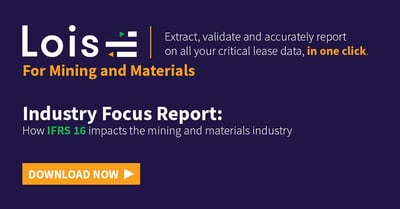Compared to other industries, the mining and materials sector moves through some of the most pronounced boom and bust cycles in the world. As a result, equity prices and investment trends in the sector can be just as pronounced and volatile, shifting as commodity prices rise and fall. This volatility affects a company's free cash flow, which is an ongoing issue for companies in the mining and materials sector.
According to McKinsey, free cash flow in the sector has decreased by 25 per cent since 2015. While the last year has provided strong financial returns for large mining companies, now is not the time to be complacent. In fact, the strength of the sector throughout the COVID-19 pandemic provides an opportunity for businesses to ensure they are structuring their companies for the future across their finances, operations, and strategy.
In this article, we outline the importance of cash flow forecasting and financial modelling for the mining and materials sector, and how having effective reporting systems and processes across your organisation can drive more accurate forecasting.
Why is cash flow forecasting and financial modelling important?
With the COVID-19 pandemic and other drivers, such as iron ore supply shortages from Brazil, affecting commodity prices, companies are facing potential volatility in the medium term, which can make it difficult to fund planned investments. While it's an industry-wide challenge, it provides finance and accounting professionals in the sector with an opportunity to strengthen their organisation's data and accounting systems to drive more accurate cash flow forecasting. It's important to note, however, that a company's forecasting is only as good as the quality of data inputs it receives.
Every cash flow forecast should have the following three inputs:
- Cash balance: The cash balance for the business area in question.
- Inflows: Sources of cash into the business area, including sales, receivables, royalties, and other revenue-generating activities.
- Outflows: Current and upcoming expenses. For example, in asset leasing, this may include upcoming payments and the financial arrangements for end-of-lease services.
These inputs can be managed and analysed on a business unit, project, or whole-of-organisation basis. For many organisations in the mining and materials sector, effective lease accounting systems which ensure compliance can provide the data needed to see which levers will unlock cash flow.
Strengthen your cash flow through leasing assets
Mining and materials companies that proactively manage their finances have the ability to adjust their approach to financing growth based on the stage of the cycle and long-term expansion strategy. For companies looking to use a range of financial levers to manage their cash flow and grow, selling non-core assets and entering into leasing agreements can provide greater balance sheet protection and another avenue of funding. For example, selling largescale equipment and machinery to an asset leasing company such as Quadrent provides businesses with a cost-effective way to acquire equipment.
The long-term sale and leaseback of assets need to be accounted for on the company's balance sheet, while smaller assets with agreements shorter than one year can be converted to operating expenditure and accounted for off the company's balance sheet.
Whether your company is a junior explorer or an established mining company, there are strict lease accounting standards that must be met so your business remains compliant while enjoying the benefits of lease agreements for a range of assets.
Having the right software to accurately record all of the company's lease data ensures a company remains compliant and takes the opportunity to be more strategic with its asset leasing practices. As another avenue of finance and working capital for the organisation, the potential to drive better business outcomes through software-based lease accounting solutions can't be overlooked.
Get on top of your lease accounting and enjoy better business insights
Ensuring adequate cash flow and effectively managing your company's funding facilities is critical in the mining and materials sector. As a sector where organisations rely on leasing many of their assets, having the right systems and processes in place to accurately account for your organisation's leases will drive compliance and better reporting across your company.
LOIS, Quadrent's lease accounting solution, also includes forecasting and financial modelling tools which allow businesses to use the data from their lease accounting environment to forecast future financials.
The power in accounting and finance data not only comes from accurate reporting, but analysis of this data will drive stronger commercial decision making in your organisation. Whether you're looking to finance future asset leases, or you're aligning your lease cash flow with the rest of your business's cash flow, Quadrent has the tools you need to make lease accounting and forecasting effective and streamlined.
At Quadrent, we can help you access the latest technology and systems to accurately record your lease agreements and use this data to drive stronger decision making and cash flow forecasting. To learn more about how to do this, you can find more information here.
